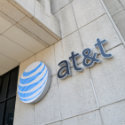
Surprise! AT&T says it has a new, patented way to use power lines to deliver "multi-gigabit speeds" wirelessly to the home.
John Donovan, chief strategy officer at AT&T Inc. (NYSE: T), introduced "Project AirGig" on Tuesday afternoon. The technology, which AT&T already has patents on, wirelessly rides alongside -- not inside -- medium voltage power lines and uses newly designed "low-cost" plastic antennas, to deliver 4G or 5G connections into the home. Because of the patented nature of the technology, AT&T didn't go into great detail on the technology, but Donovan stressed it as a "breakthrough" technology.
Older readers may remember that broadband power line (BPL) power line technology was a hot topic years ago, but it turned out to be a costly and expensive disappointment. This is not that, Donovan stresses. (See Grids Get Smart With BPL.)
"It doesn't work through the power lines, it's a wireless technology running over the power lines," Donovan says. He adds that this means that it can be used in licensed and unlicensed radio and "high-band and low-band spectrum." Donovan says that AT&T could use the technology to deliver both 4G and 5G signals to devices in the home.
AT&T has already been testing the technology with streaming data to 4K TVs in the lab. "We're looking for the right global location to trial this thing," Donovan said. Trials are expected to start next year.
See a video from AT&T for more:
That doesn't mean that AT&T is looking at smooth sailing for Project AirGig. Donovan says the carrier will have to strike deals with local utilities around deployments and build up a vendor ecosystem.
"I wouldn't call it firmly on the roadmap," Donovan said.
Nonetheless, he said on the call Tuesday that he expects the deployment of AirGig technology to track about a year behind 5G deployments, so likely 2019 for fixed applications and 2020 for mobile uses.
If AT&T can get this technology off the ground in a cost-effective manner, it could be one of the answers as to how to bring broadband services to underserved countries and rural areas in the US: using existing power line infrastructure.
— Dan Jones, Mobile Editor, Light Reading
About the Author(s)
You May Also Like












